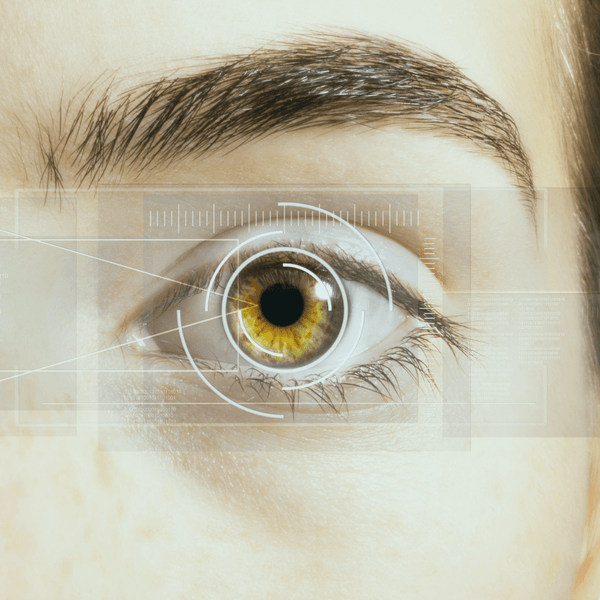The latest advancements in eye care technology you need to know
As technology continues to evolve, eye care has seen significant advancements that have improved the diagnosis, treatment, and prevention of eye diseases. People all over the world benefit from eye care technology which has advanced greatly in the last few years.
Here are some of the latest advancements in eye care technology you need to know:

1. Optical Coherence Tomography (OCT)
OCT is a non-invasive imaging technique that provides high-resolution images of the eye’s internal structures, including the retina and optic nerve. The technology uses light waves to capture cross-sectional images of the eye, allowing eye doctors to diagnose and monitor a range of eye diseases, such as age-related macular degeneration (AMD), glaucoma, and diabetic retinopathy. The latest OCT technology has improved resolution and speed, allowing doctors to detect and track eye diseases at earlier stages.
2. Advanced Imaging
Various eye diseases can be detected and diagnosed using advanced imaging technology. It is also used to measure the health of the eyes and overall vision. It uses light, infrared, or radio waves to create an image of the inside of your eye. This includes the retina, optic nerve, and other parts of your eye. A computer analyzes the images to determine if your eyesight is abnormal. The results from this test can be used by doctors to determine the best course of treatment for you.

3. Advanced Phoropter
A phoropter is a device that assists doctors in determining which type of lens and what power you need for correcting your vision. There are usually a series of lenses behind your eyes that can be rotated and adjusted. The process is repeated with each lens until you have found a pair that you can see clearly from all distances (near, intermediate, and far).
This traditional device has been improved with the Advanced Phoropter. It projects text onto a screen in front of the patient’s face, allowing him or her to read it without having it printed on paper first.
4. Femtosecond Laser Surgery
Femtosecond laser surgery is a precise and minimally invasive surgical technique used to correct a range of vision problems, such as cataracts and refractive errors. The technology uses ultrafast laser pulses to create incisions and remove tissue with minimal damage to surrounding tissues. The latest advancements in femtosecond laser technology have improved surgical precision and safety, allowing for faster recovery times and better outcomes.

5. Robotic-Assisted Microsurgery
According to Market Research Future, the global robotics market will reach $214.68 billion by 2030. Therefore, robotics is spreading into various industries and medical sciences with time. One such advancement is robotic-assisted microsurgery. With this technique, surgeons can perform delicate procedures on the eye, such as cataract extraction and corneal transplantation, with greater precision and accuracy.
6. Intraocular Lens (IOL) Implants
IOL implants are used to replace the natural lens of the eye during cataract surgery. The latest advancements in IOL technology include multifocal and accommodating lenses that can correct both near and far vision, reducing the need for glasses or contact lenses. Other advancements include toric lenses that can correct astigmatism and extended depth of focus lenses that can improve visual quality in low light conditions.
7. Retinal Gene Therapy
A new, noninvasive treatment option for eye diseases is retinal gene therapy. The treatment uses gene therapy to treat age-related macular degeneration (AMD) and retinitis pigmentosa (RP). This treatment involves injecting an eye with a virus containing a healthy copy of the gene that causes AMD or RP. As a result, the virus delivers the healthy gene directly to the retina.

8. Artificial Intelligence (AI)
AI technology is increasingly being used in eye care to improve the accuracy of diagnosis and treatment. AI algorithms can analyze large amounts of patient data, including medical records, imaging studies, and genetic information, to help eye doctors identify and treat eye diseases more effectively. AI technology can also help predict disease progression and recommend personalized treatment plans for patients.
9. Corneal Cross-Linking (CXL)
Corneal cross-linking is a minimally invasive procedure used to treat keratoconus, a progressive eye disease that causes thinning and bulging of the cornea. The latest advancements in CXL technology include accelerated protocols that can reduce treatment time and improve outcomes. Other advancements include the use of riboflavin eye drops to enhance the effectiveness of the treatment.
10. Contact Lens Technology
Contact lens technology has seen significant advancements in recent years, including the development of scleral lenses that can improve visual acuity and comfort for patients with corneal irregularities. Other advancements include soft contact lenses with advanced materials that can provide better oxygen permeability and moisture retention, reducing the risk of eye infections and discomfort.
In conclusion, the latest advancements in eye care technology have revolutionized the diagnosis, treatment, and prevention of eye diseases. These advancements have improved the accuracy and safety of eye care procedures, reduced recovery times, and improved visual outcomes for patients. As technology continues to evolve, we can expect further advancements that will enhance our understanding of eye diseases and improve the quality of care for patients.
If you have any questions about eye care treatment feel free to contact us.


